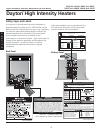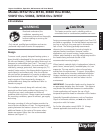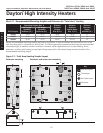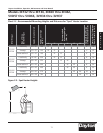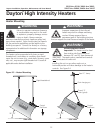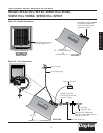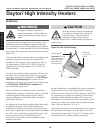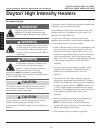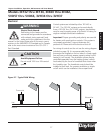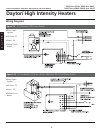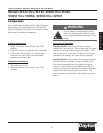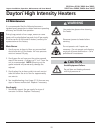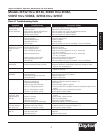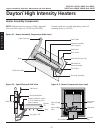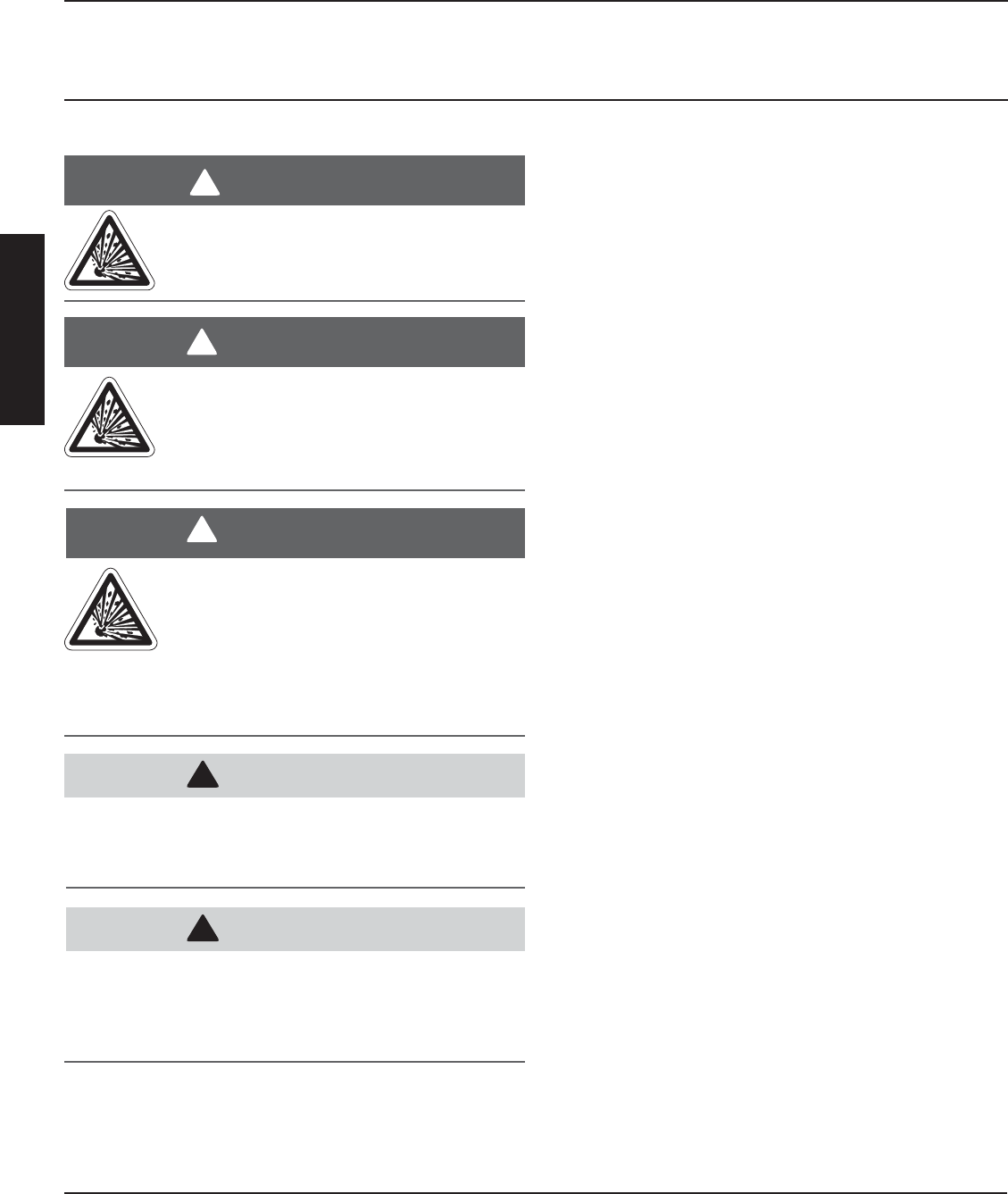
Dayton Installation, Operation, Maintenance and Parts Manual
Dayton High Intensity Heaters
®
3E132 thru 3E134, 3E460 thru 3E462,
5VD57 thru 5VD66, 3VH34 thru 3VH37
E
N
G
L
I
S
H
This heater must be installed and serviced by trained gas
installation and service personnel only.
The installation of this heater must conform with local
building codes or, in the absence of such codes, the
National Fuel Code (NFPA 54).
The gas outlet must be in the same room as the
appliance and accessible. It may not be concealed within
or run through any wall, floor or partition.
1. Install a sediment trap / drip leg if condensation may
occur at any point of the gas supply line. This will
decrease the possibly of loose scale or dirt in the
supply line entering the heater’s control system and
causing a malfunction. Note: High pressure gas
above 14 in. W.C.P. (water column pressure) requires
a high pressure regulator and ball valve (field
supplied).
2. Form the stainless steel flexible connector (field
supplied) into a smooth C-shape allowing 12 in.
between the flexible connector’s end nuts.
Figure 2.5.
3. Attach the ball valve (field supplied) to the gas
supply pipe. Apply pipe compound to NPT adapter
threads to seal the joint. Use only a pipe compound
resistant to liquid petroleum. NOTE: Provide a 1/8
in. NPT plugged tapping accessible for test gauge
connection immediately upstream of gas connection
to the heater (provided on ball valve, when
supplied).
4. Attach the flexible connector to the adapter and
burner control box inlet. Seal the joints.
NOTE: Excessive torque on the manifold may
misalign the orifice. Always use two wrenches to
tighten mating pipe connections.
5. Final assembly must be tested for gas leaks.
16
CAUTION
!
The fittings (nuts) on the flexible connector must be
connected to an adapter. They may not be directly
connected to the gas supply pipe.
WARNING
!
!
Testing for gas leaks with an open flame
or other sources of ignition may lead to a
fire or explosion and cause serious injury
or death. Test in accordance with NFPA or
local codes.
CAUTION
!
WARNING
!
!
Failure to install, operate or service this
appliance in the approved manner may
result in property damage, injury or death.
In high moisture or corrosive environments, use gas
supply lines and connectors suitable for the
environment. Periodically inspect for signs of failure or
leakage.
To connect the gas:
WARNING
!
!
An approved connector, suitable for the
environment of equipment usage, is
required. Visible or excessive swaying,
flexing and vibration of the gas
connections must be avoided to prevent failure.
Neither the gas pipe nor the connector shall be placed
in the ‘flue discharge area’.



